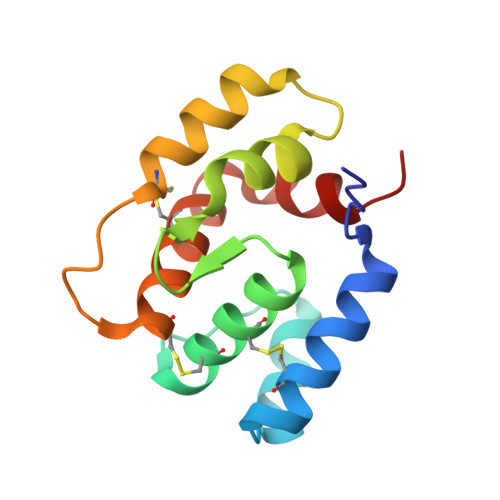Aedes aegypti Odorant Binding Protein 22 selectively binds fatty acids through a conformational change in its C-terminal tail.
Wang, J., Murphy, E.J., Nix, J.C., Jones, D.N.M.(2020) Sci Rep 10: 3300-3300
- PubMed: 32094450
- DOI: https://doi.org/10.1038/s41598-020-60242-9
- Primary Citation of Related Structures:
6NBN, 6OG0, 6OGH, 6OII, 6OMW, 6OPB, 6OTL, 6P2E - PubMed Abstract:
Aedes aegypti is the primary vector for transmission of Dengue, Zika and chikungunya viruses. Previously it was shown that Dengue virus infection of the mosquito led to an in increased expression of the odorant binding protein 22 (AeOBP22) within the mosquito salivary gland and that siRNA mediated knockdown of AeOBP22 led to reduced mosquito feeding behaviors. Insect OBPs are implicated in the perception, storage and transport of chemosensory signaling molecules including air-borne odorants and pheromones. AeOBP22 is unusual as it is additionally expressed in multiple tissues, including the antenna, the male reproductive glands and is transferred to females during reproduction, indicating multiple roles in the mosquito life cycle. However, it is unclear what role it plays in these tissues and what ligands it interacts with. Here we present solution and X-ray crystallographic studies that indicate a potential role of AeOBP22 binding to fatty acids, and that the specificity for longer chain fatty acids is regulated by a conformational change in the C-terminal tail that leads to creation of an enlarged binding cavity that enhances binding affinity. This study sheds light onto the native ligands for AeOBP22 and provides insight into its potential functions in different tissues.
- Dept. of Pharmacology, University of Colorado School of Medicine, Anschutz Medical Campus, 12801 East 17th Ave, Aurora, CO, 80045, USA.
Organizational Affiliation:

















